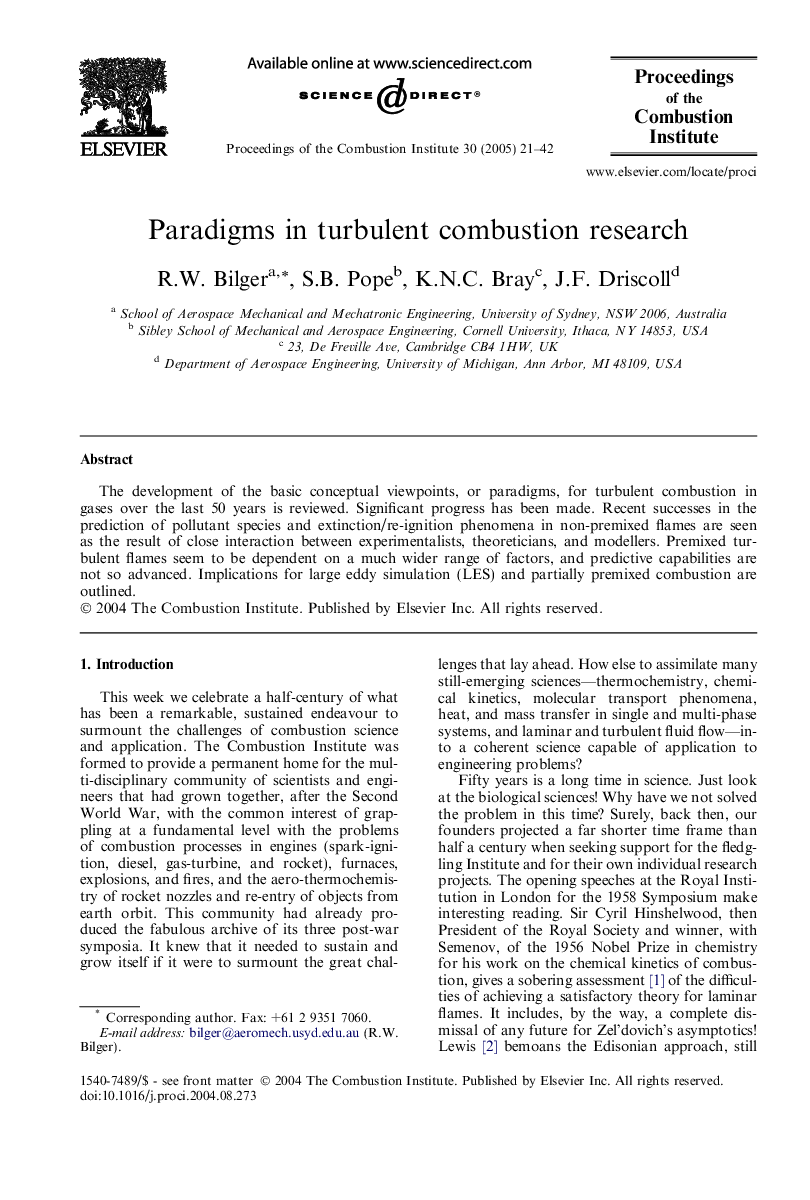| Article ID | Journal | Published Year | Pages | File Type |
|---|---|---|---|---|
| 9637327 | Proceedings of the Combustion Institute | 2005 | 22 Pages |
Abstract
The development of the basic conceptual viewpoints, or paradigms, for turbulent combustion in gases over the last 50 years is reviewed. Significant progress has been made. Recent successes in the prediction of pollutant species and extinction/re-ignition phenomena in non-premixed flames are seen as the result of close interaction between experimentalists, theoreticians, and modellers. Premixed turbulent flames seem to be dependent on a much wider range of factors, and predictive capabilities are not so advanced. Implications for large eddy simulation (LES) and partially premixed combustion are outlined.
Related Topics
Physical Sciences and Engineering
Chemical Engineering
Chemical Engineering (General)
Authors
R.W. Bilger, S.B. Pope, K.N.C. Bray, J.F. Driscoll,
